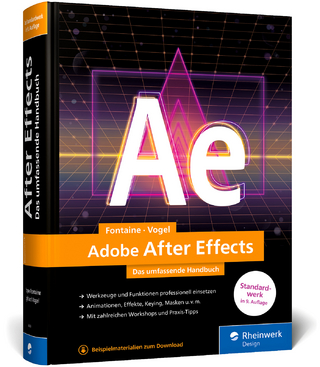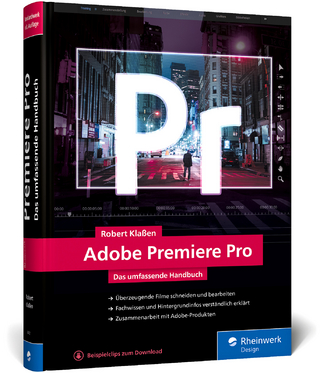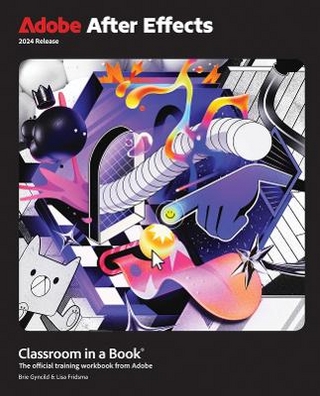
How to Cheat in Maya 2010
Routledge (Verlag)
978-1-138-44270-2 (ISBN)
Take your animations to the next level with this essential guide to Maya 2010. Packed with character animation techniques and the secrets of professional animators, How to Cheat in Maya 2010 provides the tips and tools to help you create high quality animation in the most efficient way possible. This comprehensive guide to animating with Maya contains gold-mine coverage, including animation techniques, using Maya's tools with the 12 animation principles, working with constraints, and even foolproof lighting tricks to show off your work.
With this essential handbook, learn which circumstances call for which techniques, and how to get quality results fast. You will not only learn how to be productive in Maya, but also be given access under the hood to the actual scene files of a professional animator. Covering such topics such as pose to pose blocking, layered animation, fixing gimbal lock, facial animation, and much more, How to Cheat in Maya 2010 is an invaluable resource for artists and animators alike.
-- See "under the hood" of a professional animator's workflow with beginning and ending scene files for every technique and workflow example in the book.
--Complete, step-by-step walkthroughs of essential techniques every animator needs to know such as walk cycles, pose-to-pose blocking, lip syncing to dialogue, and much, much more.
-- Proven "How to Cheat" series - Learn to create impressive, appealing animations using the fastest techniques possible, containing everything you need to know about Maya as a character animator.
--Includes rarely discussed topics, such as reading spline curves, avoiding gimbal lock, animation layers, creating appealing lighting for demo reels, and features interviews with some of the most experienced animation leads and TDs working in the industry
-- Learn to apply these professional techniques to your own animations with the accompanying downloadable resources which include all scene files to follow along with, as well as final versions to study in the Graph Editor
Eric Luhta is a professional animator whose recent credits include Bioshock 2, Cloudy With A Chance of Meatballs, Horton Hears A Who!, and numerous television commercials. Eric has extensive experience with Autodesk's Maya, including teaching it, as an instructor for the Maya Training Program at AnimationMentor.com. He currently lives in Los Angeles, CA with his wife and 3 computers.
How to Cheat In Maya
Topics Outline
Section 1: Character Animation in Maya
Essential Maya Concepts in Character Animation
Setting up Projects
Panel Layouts
Navigation
Camera Setup
Parenting
Constraints
Grouping
Using Scripts
Animating
Posing Characters Effectively
Properly posing the spine
IK vs. FK and blending between them
Keyframing techniques
Character Sets
Using the timeline
Gimbal lock and how to minimize it
The Graph Editor
Tools
Spline Curves and how they really work
Tangents
Good spline technique
Editing splines
Applying animation principles
Timing and Spacing
Ease In/Out
Anticipation
Overlapping Action
Squash and Stretch
Tracking Arcs
Dope Sheet
Tools
Using in blocking
Making big changes in the middle of an animation
Pose to Pose Blocking
Having enough breakdowns
The dreaded moment of going to spline
Layered Animation
Creating a cycle
Starting with the root
Calculating an in-place cycle to translate correctly in world space
More Animation Techniques
Creating settle
Moving holds
Polishing
Hitting walls
Facial animation and lip sync
Section 2: Adding to your animation
Modeling Props for Your Characters
Polygon Modeling Concepts
Primitives
Box Modeling
Creating models that deform well
Rigging Props and Scenery
Deciding on the functionality needed
Creating joint skeletons
Skinning
Painting Weights
IK
Deformers
Advanced Constraints
Blend Shapes
Creating controls for your props
Using wrap deformers to create the look of clothing
Creating hair that can be easily animated
Shading
Hypergraph Essentials
Material Types
Material Attributes
Applying file textures
3d Paint Tool
Paint Effects
Foolproof Lighting Solutions
Flat shaded with shadows
Final Gather Technique
Physical Sun and Sky
Rendering
Setting up render passes for compositing
Batch Rendering
Command line rendering
| Erscheinungsdatum | 07.10.2017 |
|---|---|
| Verlagsort | London |
| Sprache | englisch |
| Maße | 189 x 252 mm |
| Gewicht | 793 g |
| Themenwelt | Kunst / Musik / Theater |
| Informatik ► Grafik / Design ► Film- / Video-Bearbeitung | |
| Informatik ► Grafik / Design ► Maya | |
| ISBN-10 | 1-138-44270-4 / 1138442704 |
| ISBN-13 | 978-1-138-44270-2 / 9781138442702 |
| Zustand | Neuware |
| Haben Sie eine Frage zum Produkt? |
aus dem Bereich


